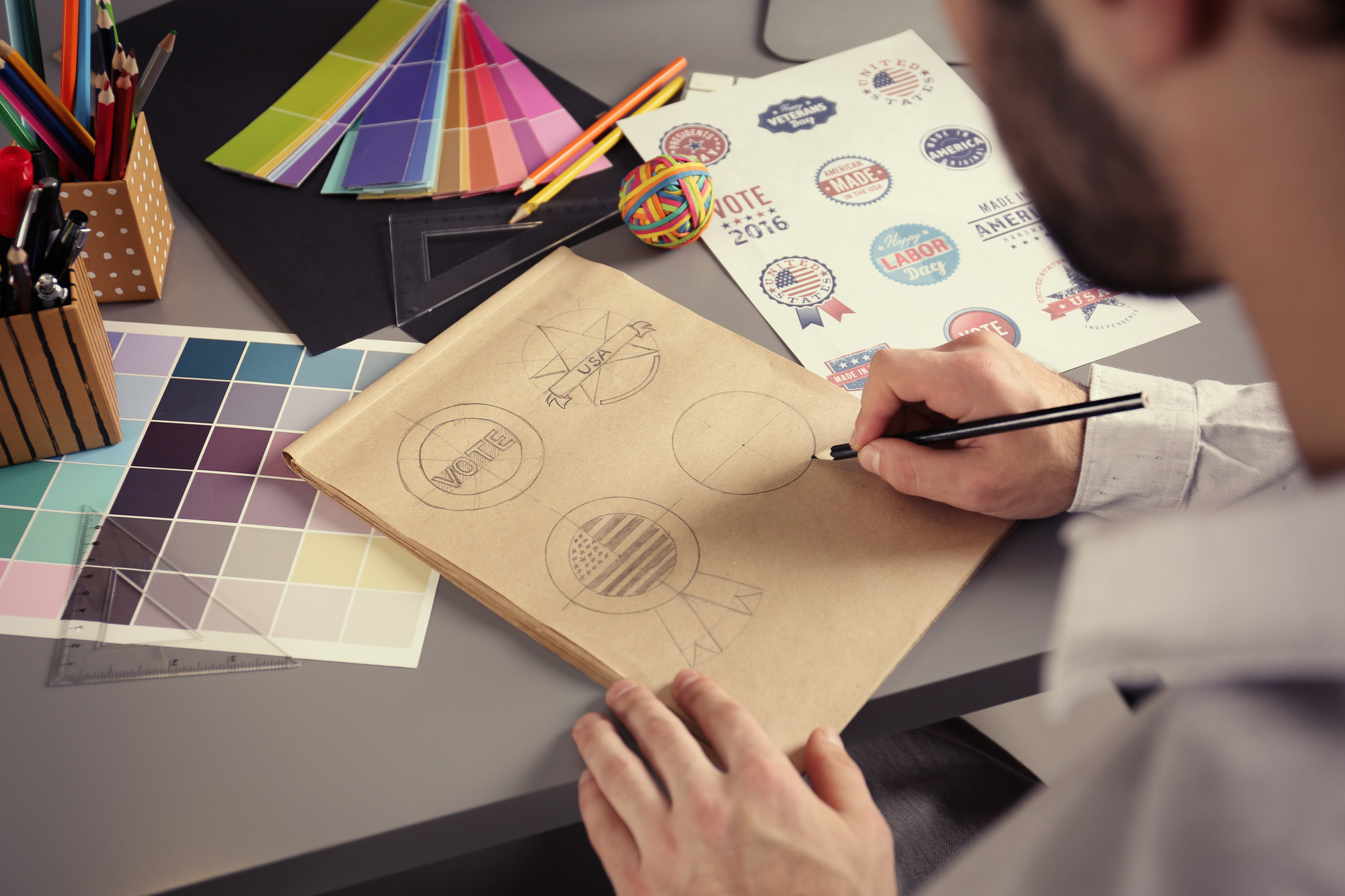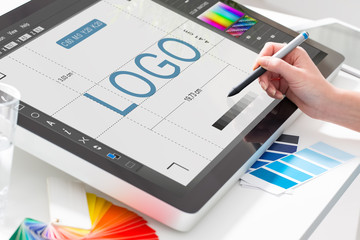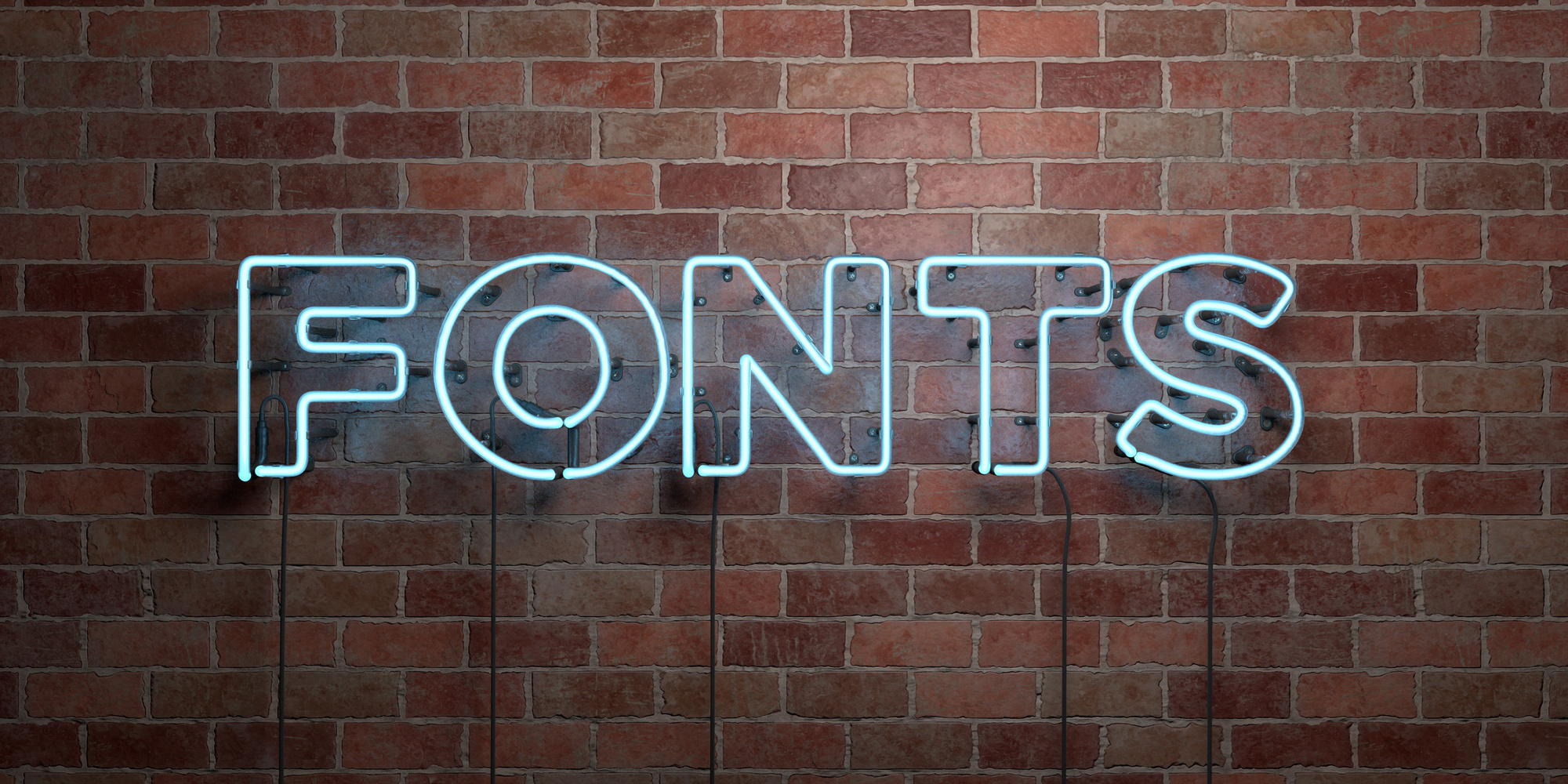7 Great Supplement Branding And Logo Tips
Posted on March 27, 2018 by Logo Design Tips and Tricks

You’ve decided to join the $37 billion-per-year industry that is dietary supplements. Do you know how to brand your product successfully?
Take advantage of great supplement branding to ensure you find quick profits in an industry that isn’t well-known for its advertising efforts.
Here are 7 tips to upgrade your supplement branding and logos.
1. Be Different
In an overly-saturated market like supplementation, your brand needs to stand out.
Make sure your mission resonates differently than the other brands, especially those that don’t take time with their own branding. You want to be known for how professional and knowledgeable you are in the supplement industry.
Create a unique brand mission statement and logo – you’ll never be forgotten.
2. Create for Community
The best thing about a brand is the fans. But how do you get raving, loyal fans?
Develop your brand and logo that exemplifies your ideal customer. You want them to be powerful, healthy, full of life. Your brand should mirror this.
If you make your brand with the community in mind, then it will translate into a powerful influence over those ideal customers and fans.
3. Use Logo Software
If you want to be seen as professional, you’ll want a professional logo.
This doesn’t mean you can’t make it yourself. Logo and branding software can be easily found online, some of them cheap or even free. Use the tools the internet provides and turn your concept art into a real logo.
If you put time and effort into your logo you can exude the message you want to convey, like how America Vitaminas exudes a feeling of restful, flowing sleep with their melatonin suplemento.
Your logo is the first thing people will recognize – it needs to be perfect.
4. Target Your Audience
Research your target clientele, then brand around them. Similar to creating a community, the only way you can begin is by finding where your customers live, what they look like, what their goals are, who they care about, where they work, and more.
Having a clear image of who will be purchasing your products is supplement branding 101.
5. Don’t be Afraid to Upgrade
Let’s be honest: We rarely get it right on the first try.
Thankfully, people will understand. We’re all human. Brands and logos are simply manifestations of human goals. So, if your logo or brand message doesn’t work as well as you originally thought, don’t fear to change them again and again until it’s perfect.
If Coca-Cola and Nike can alter their logos and brands, why can’t you?
6. The Characteristics: Name and Color
Just like the logo, how you name your supplement company will decide who notices you and who disregards you.
Same goes for color. The name, the colors, and the logo all need to invoke trust with the customer.
Optimum Nutrition works because it covers the “nutrition” aspect, their logo is clean and sleek, and their color scheme suggests professional, high-quality whey protein and other products.
7. What’s Your Voice?
How do you communicate your message? This is what your brand is all about.
Having a one-sentence brand mission helps with determining your brand’s voice, logo, name, colors, and everything else. If you are the company’s voice, depict that as best you can. If a family member or your ideal customer is the brand voice, run with it.
Once you establish brand voice, you’ll hopefully pigeonhole your brand to the customers you truly wanted.
Supplement Branding is Key
Give one or more of these tips a try to bump your supplement branding up a notch.
If you want help with crushing your fitness brand’s logo, one that invokes real motivation (and therefore more clientele), check out our guide to design elements.
How to Design an Attractive Clinic Logo
Posted on March 27, 2018 by Logo Design Tips and Tricks

Do you need a new clinic logo?
Whether you’re giving your current logo a refreshed look or creating a logo for a new clinic, there is a lot to consider.
You’ll want to get your logo design right because your logo can have a tremendous amount of impact on your clinic.
Researchers at MIT found that a good logo design can have a positive impact on your customer’s commitment to your brand, but also on your bottom line.
If you’re not sure how to design a logo for your clinic, you’ve come to the right place.
Here are the top tips to create an attractive clinic logo.
Start with the Brand
When designing a logo, you want to have a deep understanding of what the brand is. After all, a logo is a visual representation of a brand.
In order to understand your clinic’s brand, you’ll want to ask yourself questions to help guide you.
An easy way to go about it is to think about your brand personality. Creating your brand personality is a matter of thinking of your company as a person or character. You’ll then ask yourself a series of questions to uncover the traits of the brand.
- If my brand was a car, what would it drive?
- How would my brand dress?
- Where does my brand live?
- How does the brand speak and behave?
- What are the top adjectives to define my brand?
The last question is important because you’ll need to be able to define the main characteristics of your brand. Here are a few to think about to get yourself started:
Smart, sassy, strong, calm, relaxed, masculine, feminine, approachable, elegant, caring, quirky, energetic, serious.
You’ll then want to match these adjectives up with brand archetypes to discover what your brand’s personality is.
Not only will this exercise help you in designing a clinic logo, but you can use these traits in hiring staff. You can match the qualities of candidates with the qualities of the brand. That will help you determine if they’re a good fit for your organization.
Be Original
You do want to do some research on logos. It will start to get your creativity going as you discover what you like and dislike about logos you come across.
Looking at your competitors’ logos will also help you discover how they’re positioning their brand in the marketplace.
While doing research to get ideas is a good thing, you don’t want to copy elements of other logos. That can backfire on you and damage your brand. It can also raise some serious questions about your ethics.
For example, this clinic for STD & HIV testing took elements of Bernie Sanders’ presidential campaign logo and tagline, right down to “Feel the Bern.”
While that seems creative and humorous at first, it isn’t a good long-term solution for a logo. Most people are only going to remember the campaign logo and slogan for a short period of time.
Not only that, but you can confuse your potential customers. They may think that your brand is somehow related to the campaign.
Use of Color and Fonts
It’s widely known that colors and fonts have an impact on your brand’s perception.
This is where you want to revisit your brand’s personality traits and create a logo that’s congruent with those characteristics.
For example, if you discovered that your brand is conservative, quiet, and strong, you can consider a dark blue color in your clinic logo. Dark blue tends to represent these characteristics, and it’s a more masculine color.
The font should reflect a similar tone. If you were to have a typeface that was a retro style, it won’t convey a conservative, quiet and strong brand.
The Shape of a Logo Impacts Your Brand
If you’re planning to incorporate shapes or symbols in your clinic logo, know that they have a psychological impact, too.
For example, the logo for this drug detox program incorporates triangles.
Studies have shown that hard angles such as these can create the perception of hardness and durability.
A rounded logo can be perceived as soft, warm, and attentive.
Either one can work well for a clinic logo, it comes down to what matches your brand’s personality better and what you want to convey to the public.
Put Your Ideas Down on Paper
As you’re going through this process, it’s important to keep detailed notes of what you want your brand to stand for and how that should be communicated visually.
These notes about your clinic’s brand personality, as well as what you liked and didn’t like about other logos.
Now, you can start sketching logo ideas. This is where you can let your creativity shine.
Don’t get to hung up on having to be perfect. These are just draft concepts, so feel free to play with colors, typefaces, and symbols.
Once you have your concepts down, go back and see which ones are most aligned with your brand personality.
You’ll want to have three solid logo concepts that you can start testing for feedback and review.
Test Your Ideas
Designing a great clinic logo is a collaborative process. Now that you have ideas down on paper, you can start getting feedback to see what works and what doesn’t.
Take your sketches and start showing them to trusted members of your staff and clients. If there’s one logo that they like more than others, ask them why.
You’ll also want to explain the brand personality to staff and clients. They may offer valuable insight and show you things that you may have missed in the process.
Start Designing Your Clinic Logo
Are you ready to start designing your logo?
As long as you’re true to the spirit of the brand and do your research, you’ll be able to design a logo that makes a great first impression.
You can get started right now with Online Logo Maker. There are images, templates, and fonts to help you draft something in a quickly as 10 minutes.
Check it out here.
4 Amazing Logo Design Tips for Your Online Shop
Posted on March 23, 2018 by Logo Design Tips and Tricks

What if you could make every customer take a second look at your online store?
It may sound impossible. However, an amazing logo design is your key to winning more customers and really selling your brand.
And making a better logo is easy. Just follow these four tips for a better design!
1. Keep It Simple
It may be tempting to jam a bunch of ideas and even words into your logo. After all, you want an image that fully encapsulates you and your brand.
However, this just makes your logo look cluttered. Think about famous logos like those of Apple or Coca-Cola: they are elegant while still being simple.
Try to focus on a single image and the name of your brand. And make sure that image represents your business in some significant way.
Ultimately, this idea is pretty simple: the simple image catches the customer’s eye and your business name associates your brand and that image!
2. Understand the Colors
Ironically, color is something that many logo designers don’t think about until the end of the process. However, the colors you will use should guide the entire design process.
Customers associate certain colors with certain ideas. For example, red is associated with romance and confidence, while blue is associated with professionalism and tranquility.
Try to pick colors that naturally go with your brand while evoking customer emotions. For instance, green is a natural choice for a lawn service due to the business itself. However, customers also have positive associations with green and being environmentally-conscious, making them likelier to choose you!
For a crash course in the importance of color, check out www.ecigwizard.com. Notice how each product makes unique use of color to appeal to different kinds of audiences!
3. Understand Brand and Audience
An amazing logo design has one real purpose. It helps your specific brand to reach a very specific audience.
Despite this, many businesses don’t fully understand either their brand or their audience. And this leads to mixed and muddled logo designs.
Start with your brand. Figure out how you want to be perceived: are you serious or are you funny? Do you want customers to think about your utility or your creativity?
Next, think about what your audience wants. Do you want to be the tool they turn to for specific solutions? Or do you want them to simply have a fun emotional attachment to a recreational product?
Once you know these things, you can create a logo that merges your goals and their needs into one perfect design.
4. The Extra Twist
This is easier said than done, but your logo should have an extra twist. This twist draws attention to what you do best.
Amazon has an arrow that shows how they have products from A to Z. FedEx uses color and font to connote a speedy delivery.
Whatever it is, add an extra twist to show your company’s extra value!
The Bottom Line of Amazing Logo Design
You want a better logo to reflect your company’s value. And you don’t have to design it on your own.
OnlineLogoMaker provides the tools you need to make the perfect logo. To see how we can transform your design, come check out our logo maker today!
5 Gorgeous Label and Logo Fonts
Posted on March 21, 2018 by Logo Design Tips and Tricks

There’s no denying the appeal of a great logo.
Think of some of the most iconic logos for today’s biggest brands. They don’t only benefit from having great design. They also use quality fonts.
Your business font is a vital part of branding and should be consistent in packaging. You need to find a font that will make your brand stand out while also making it easy to read for the consumer.
Are you looking to create your own logo? Check out these gorgeous label and logo fonts that stand out in the crowd. Read on to learn more.
1. Garamond
No list of best logo fonts is complete without a reference to Garamond.
Garamond is a group of serif typefaces since the 16th century. They first gained popularity from texts and hardcover books.
Today, Garamond remains one of the most used typefaces in the world. They add a touch of sophistication and professionalism, which make them a great logo font.
You might recognize Garamond from Apple’s logo. The combination of an elegant typeface and playful design made it an iconic piece of branding.
2. Bodoni
Have you ever seen the logo for Armani? What about Calvin Klein or Vogue?
Bodoni is a popular logo font for upscale brands. This longstanding typeface combines thick and thin letters to create bold and daring logos. It’s a favorite of the fashion industry.
You can use Bodoni to create an eye-catching and visually appealing logo.
3. Futura
There’s no shortage of brands with Futura in their logo.
You’ll see Futura in advertisements for everything from Volkswagen to FedEx. This sans-serif typeface creates a modern yet playful look.
Why go with Futura? For one, it helps create a strong brand identity. The lettering customizes to create modern and easily recognizable brands.
Futura is also widely used in print advertising. You can print out your Futura logo with custom roll labels.
4. Helvetica
You’re probably familiar with the name Helvetica.
Countless brands use this typeface in their logos. You’ll recognize this sans-serif typeface in logos for American Airlines, Ducati, Harley-Davidson, JC Penney, and more.
Helvetica may be a staple in the advertising world, but it’s still relatively new. Swiss designer Max Miedinger created this type family in the 1950s.
Helvetica is widely used thanks to it simple yet creative design. It also creates a sense of comfort and familiarity since it is in the logos of countless brands.
5. Proxima Nova
Proxima Nova may be the newest font on this list. But that doesn’t mean it’s any less impressive.
Proxima Nova had a meteoric rise since its inception in 2005. Over 25,000 websites use this font.
You’ll recognize this font in logos for big brands like Twitter and Spotify. It’s a modern and fun typeface for any brand. This is a great option if you’re looking to go digital or appeal to a younger audience.
More Logo Fonts
The right logo font makes all the difference. Use this guide to create the best logo for your brand.
Are you looking to create your own logo? We can help. Check out our free logo maker today.








